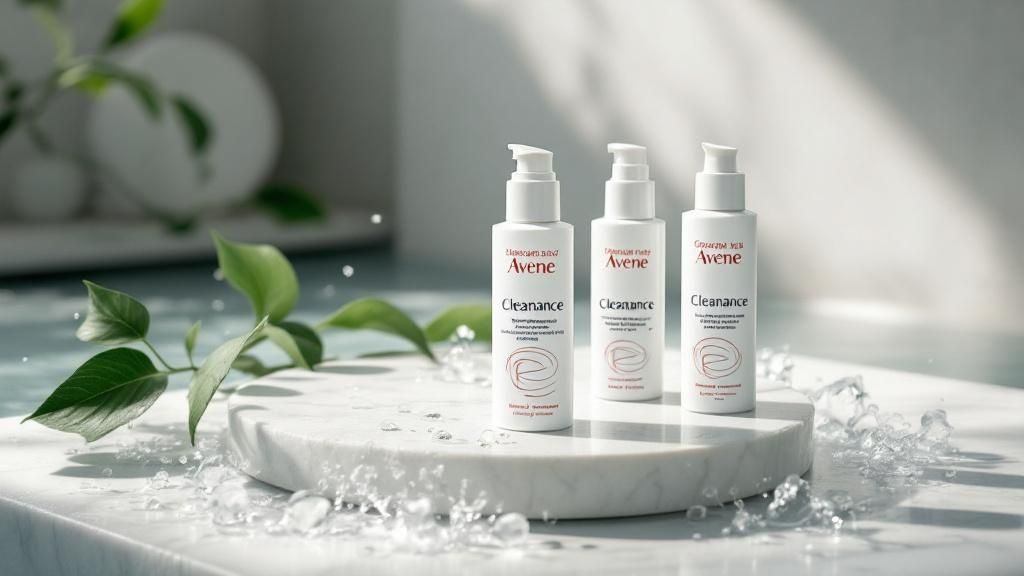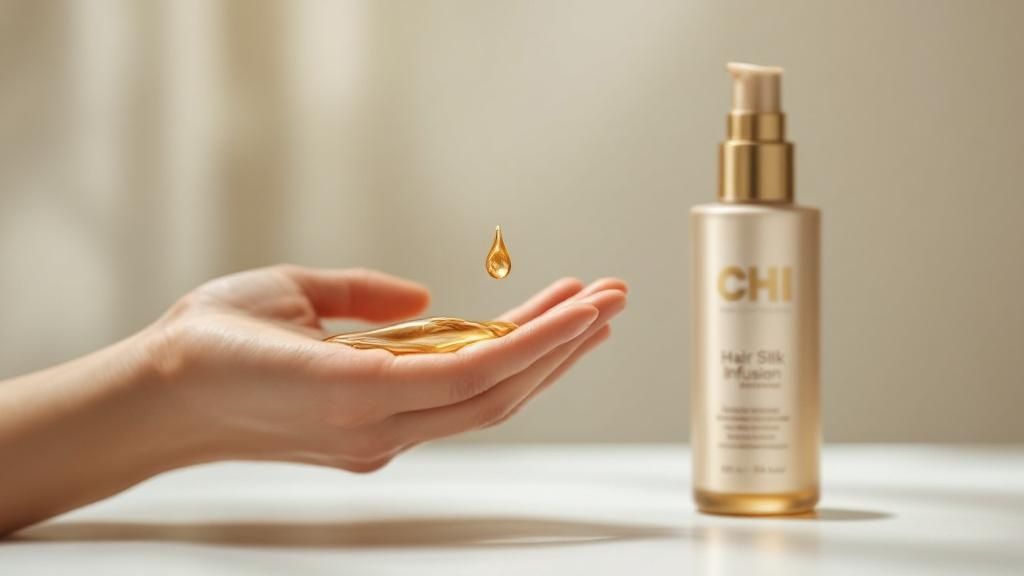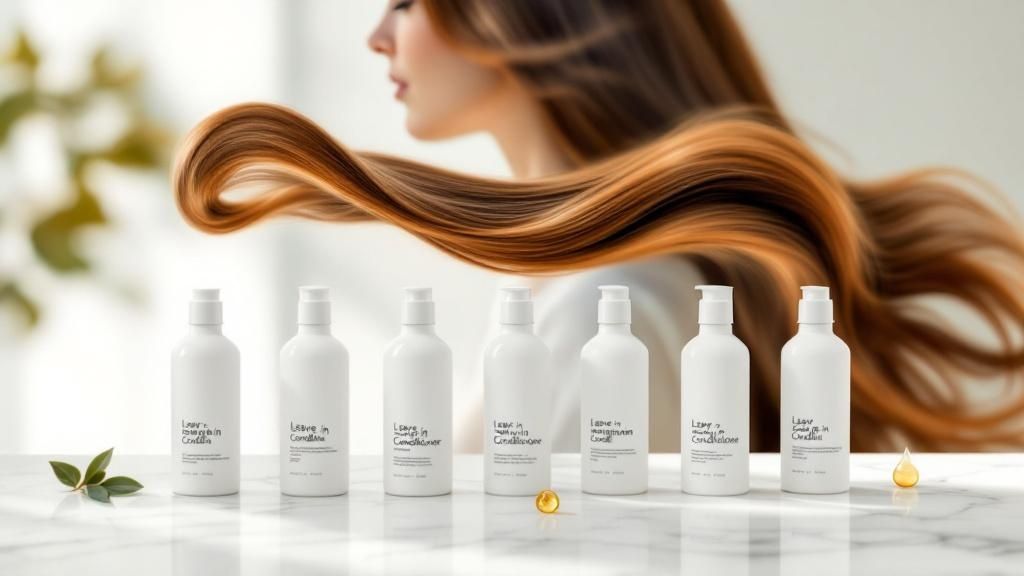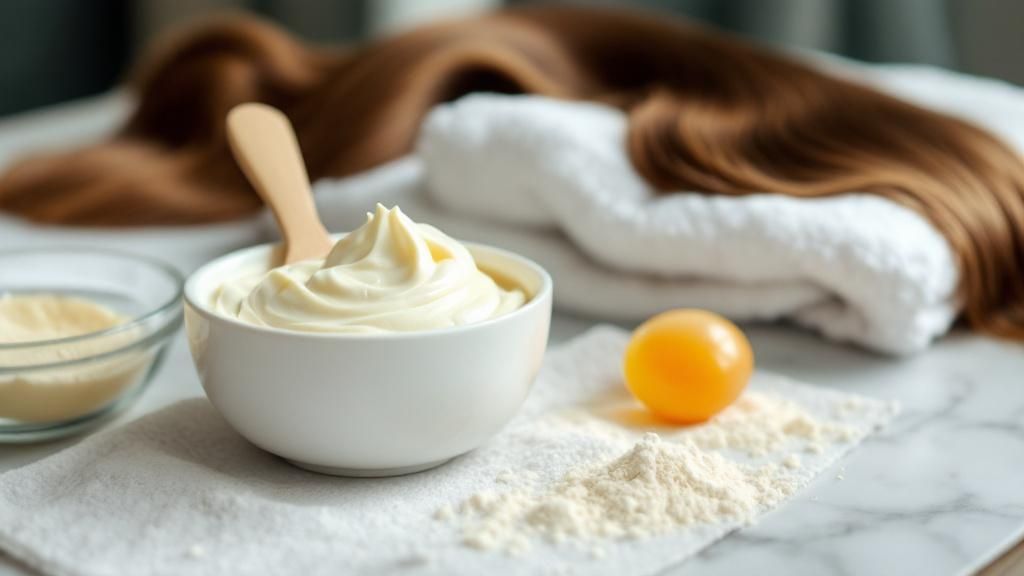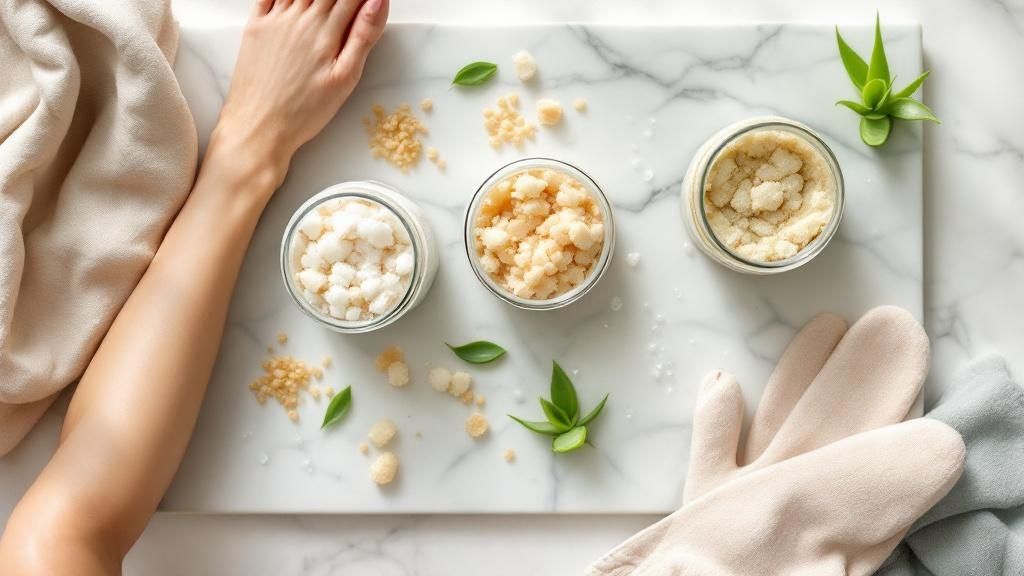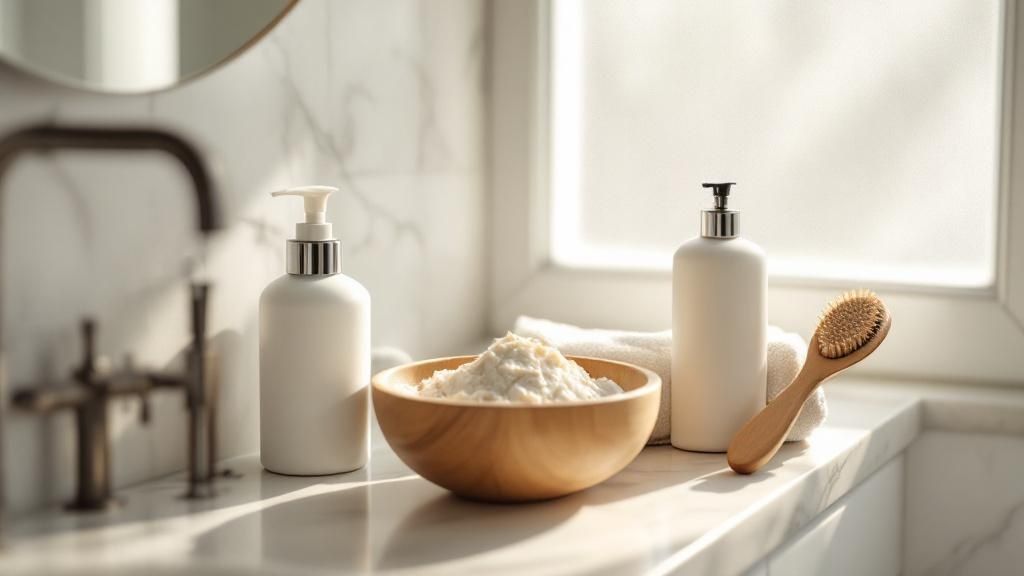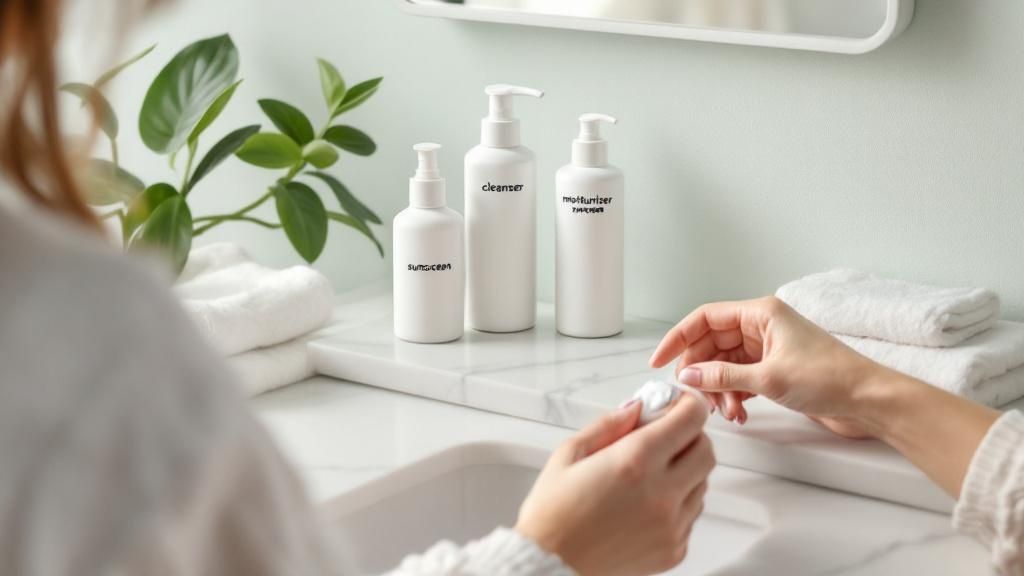
Your Guide to a Simple Beginner Skincare Routine
If you're just starting out with skincare, it's easy to feel a bit lost. Between TikTok trends and shelves packed with products, where do you even begin? The good news is, a truly effective routine doesn't need to be complicated. Forget the 10-step regimens for now.
The secret to healthy, happy skin is consistency with just three core steps: cleanse, moisturise, and protect.
Starting Your Skincare Journey with Confidence
Think of this as building a strong foundation. You wouldn't build a house on shaky ground, and the same goes for your skin. By mastering these three simple, non-negotiable steps, you're giving your skin exactly what it needs to function at its best without overwhelming it.
Here’s a breakdown of the essentials:
- Cleanse: This is your fresh start. Washing your face properly removes the day's grime, excess oil, and impurities, creating a clean canvas for your other products.
- Moisturise: Hydration is key. A good moisturiser helps maintain your skin’s natural protective barrier, keeping it feeling soft, supple, and balanced.
- Protect: This is the most crucial step for long-term skin health. Protecting your skin from the sun every single day is your best defence against premature ageing and sun damage.
I always tell beginners the same thing: an effective routine is built on consistency, not complexity. Supporting your skin’s natural barrier with a few reliable products is the real secret to achieving that healthy glow.
This simple visual breaks down how these steps flow together.
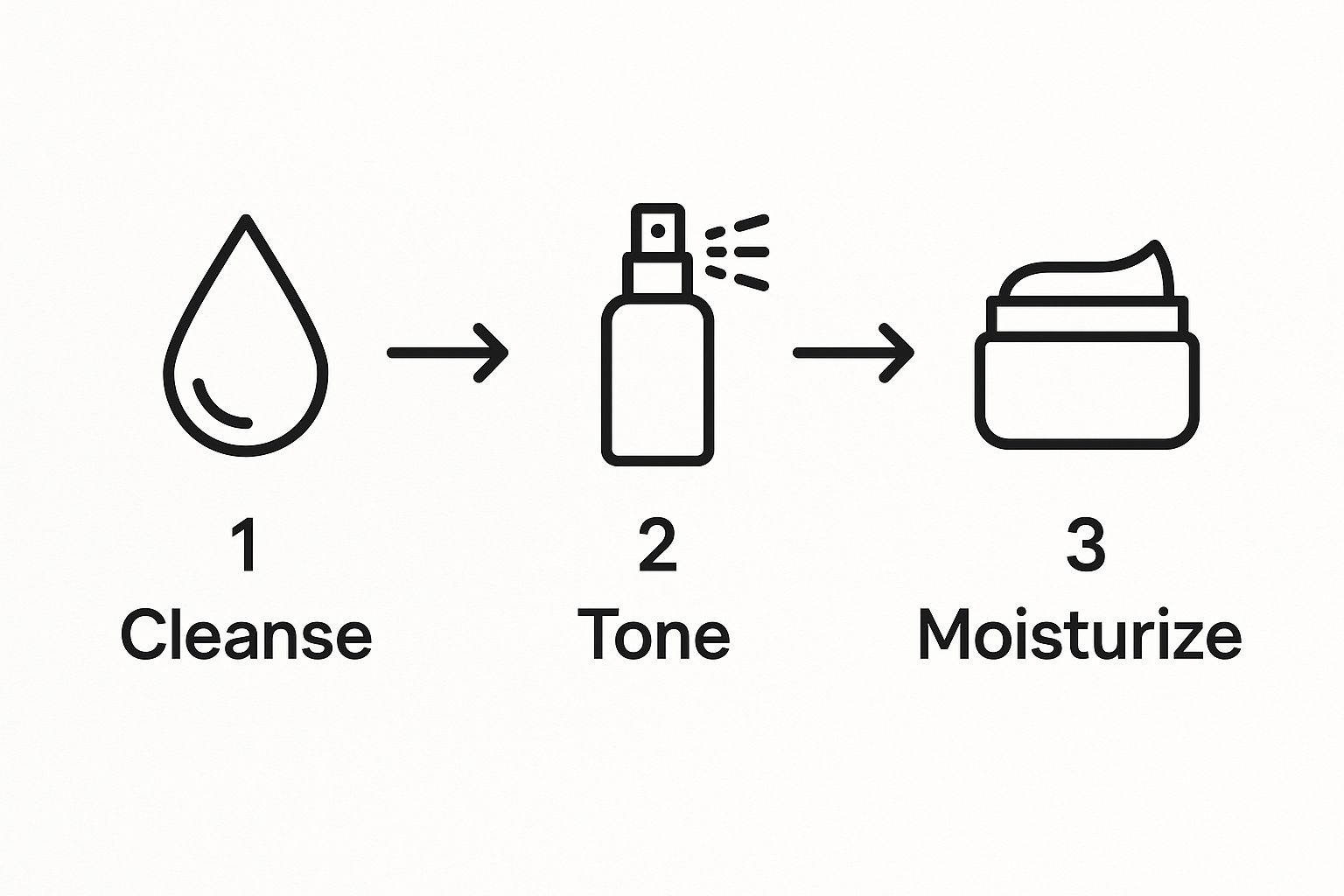
As you can see, it all starts with cleansing. From there, you can add balancing steps like a toner before finishing off by locking in hydration with a good moisturiser.
Why Simplicity Wins in Skincare
Especially in a climate like Egypt's, where we deal with intense sun and dry air, sticking to the basics is even more important for keeping your skin healthy and resilient. It's no surprise that the skincare market in Egypt is set to grow at a compound annual growth rate (CAGR) of 5.13% between 2025 and 2033. This growth is being powered by people just like you, who are looking for essential, effective products to start their journey.
To get a quick overview of how this looks in practice, here is a simple table outlining the core steps for morning and evening.
The 3 Core Steps of a Beginner Routine
| Step | Morning Routine (AM) | Evening Routine (PM) |
|---|---|---|
| 1. Cleanse | Wash away sweat and oils from the night. | Remove makeup, sunscreen, and daily grime. |
| 2. Moisturise | Hydrate and prepare the skin for the day. | Replenish moisture and support overnight repair. |
| 3. Protect | Always apply sunscreen (SPF 30 or higher). | Not needed. Your skin is in repair mode. |
By mastering these fundamentals, you’ll gain the confidence to build a routine that truly works for you and avoid those common beginner mistakes.
If you’re ready to see what a full morning schedule looks like, take a look at our detailed guide on morning skincare routine steps.
Getting the Cleanse Right
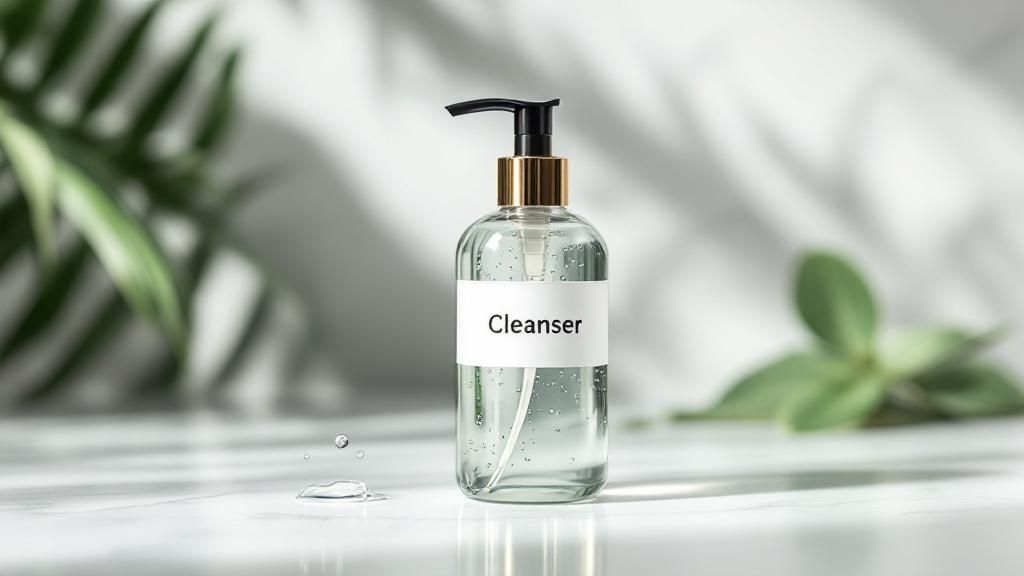
Think of cleansing as preparing a fresh canvas for your art. A good cleanser lifts away the day's grime—dirt, excess oil, and impurities—without disrupting your skin's natural moisture barrier. This is the absolute cornerstone of any good beginner skincare routine, and getting it right makes every other product work better.
One of the biggest mistakes I see people make is choosing a cleanser that's far too harsh. Does your skin feel tight, dry, or almost ‘squeaky’ clean after you wash it? That's a definite red flag. It means your cleanser has stripped away your skin's protective oils, which can throw its balance out of whack and ironically lead to more irritation or even increased oiliness.
The real goal is to leave your skin feeling soft and comfortable, never raw. This all comes down to picking the right type of cleanser for your skin.
Finding Your Perfect Cleanser Match
The texture and formula of your cleanser matter more than you might think. Each type is designed with different skin needs in mind, so let’s break down the most common ones.
- Gel Cleansers: Typically clear with a light, refreshing consistency. They're fantastic for a deep clean and are a great match for normal, combination, or oily skin because they do a great job of cutting through excess sebum.
- Foam Cleansers: These create a satisfying, rich lather and are brilliant for shifting stubborn oil. I usually recommend these for those with decidedly oily and acne-prone skin.
- Cream or Milk Cleansers: Noticeably thicker and more nourishing, these cleansers don't usually foam up. They are a godsend for dry or sensitive skin types, as they cleanse gently while adding a touch of hydration.
Now, for your evening routine, especially if you wear makeup or are dealing with the dust and pollution of a city like Cairo, you might want to consider double cleansing.
The idea is simple: start with an oil-based cleanser to dissolve makeup, sunscreen, and surface grime. Then, you follow up with a water-based one (like a gel or foam) to wash everything away cleanly. This two-step process ensures your skin is truly prepped and ready to soak up all the goodness from your nighttime products.
Choosing the Right Moisturiser for Your Skin
After cleansing, the next step that absolutely everyone needs is a good moisturiser. I like to think of it as the final, comforting seal for your skin. It’s not just about adding moisture; it’s about locking it in, reinforcing your skin’s natural barrier, and protecting it from whatever the day throws at you.
One of the biggest myths I hear all the time is that people with oily skin can skip moisturiser. This couldn't be more wrong! When oily skin gets dehydrated, it actually panics and produces even more oil to make up for the lack of water. The trick isn't to skip it, but to find the right formula that works with your skin, not against it.
Understanding Moisturiser Textures and Ingredients
Moisturisers come in a few different forms, and picking the right one often comes down to your skin type and sometimes even the time of year.
- Gels: These are your best friend if you have oily or acne-prone skin, especially in hot, humid weather. They're water-based, super lightweight, and sink in almost instantly without any greasy feeling.
- Lotions: The perfect middle-ground. Lotions have more water than creams, so they feel light but still pack a good punch of hydration. This makes them a fantastic, all-around choice for normal or combination skin.
- Creams: Rich, thick, and luxurious. Creams contain more oil and are a true saviour for dry skin, especially during the colder months when your skin is begging for extra nourishment and protection.
When you're looking at the ingredients, keep an eye out for a couple of heroes. Hyaluronic acid is brilliant because it acts like a magnet for moisture, pulling it into your skin. Ceramides are also fantastic—they're fats (lipids) that are naturally part of your skin barrier, helping to lock all that goodness in.
The real job of a moisturiser isn't just to hydrate, but to prevent your skin from losing that hydration throughout the day. The right one will leave your skin feeling plump and comfortable, never tight or greasy.
To help you find your perfect match, I've put together a simple table that breaks down which textures and ingredients to look for based on your skin's unique needs.
Choosing Your Moisturiser by Skin Type
| Skin Type | Recommended Moisturiser Texture | Key Ingredients to Look For |
|---|---|---|
| Oily | Gel or a very lightweight lotion | Niacinamide, Salicylic Acid, Hyaluronic Acid |
| Dry | Cream or a rich lotion | Ceramides, Shea Butter, Hyaluronic Acid, Glycerin |
| Combination | Lightweight lotion or a gel-cream | Hyaluronic Acid, Niacinamide, Peptides |
| Normal | Lotion or a light cream | Hyaluronic Acid, Glycerin, Antioxidants |
| Sensitive | A gentle, fragrance-free cream or lotion | Ceramides, Allantoin, Oatmeal, Niacinamide |
Remember, this is just a starting point. Your skin can change with the seasons or even your lifestyle, so don't be afraid to switch things up when needed.
If you're dealing with that tricky mix of oily and dry patches, we've got you covered. Check out our detailed guide to finding the best moisturizer for combination skin for more specific recommendations. Finding the right moisturiser is all about listening to what your skin is telling you it needs.
The Importance of Daily Sun Protection
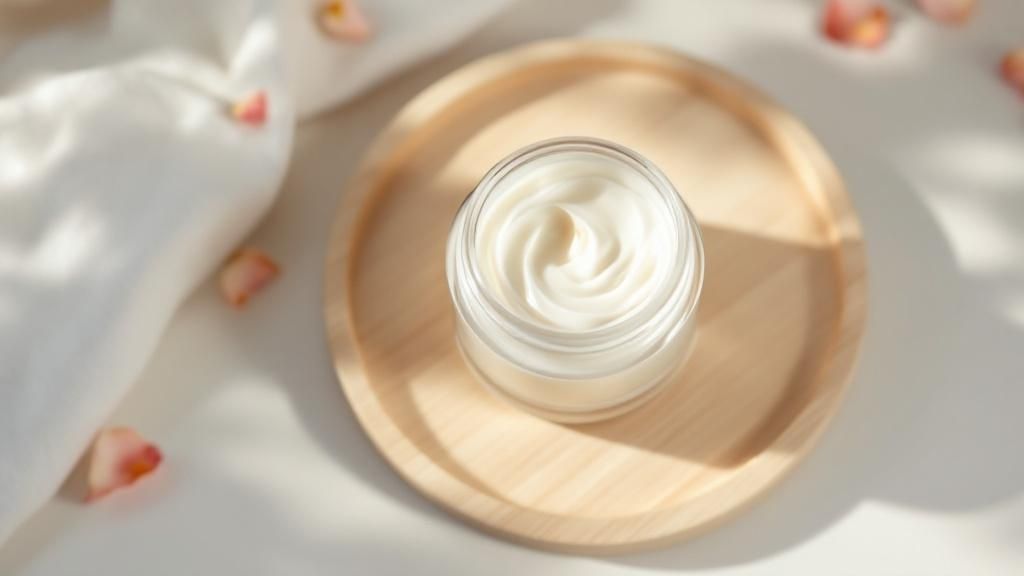
If you only commit to one part of your beginner skincare routine, let it be this one. Sunscreen isn't just for sunny beach days; it's the single most powerful tool you have for keeping your skin healthy for the long haul. Daily use is non-negotiable—even on cloudy days or when you're just sitting by a window.
It’s genuinely the best anti-ageing product money can buy. Did you know that up to 80% of the visible signs of ageing, like wrinkles and dark spots, come from sun exposure? It's not just about getting older. Applying sunscreen every single morning protects the investment you're making with every other product in your routine.
Mineral vs. Chemical Sunscreens
Walking down the sunscreen aisle can be overwhelming, but it really comes down to two main categories: mineral and chemical. There’s no "better" option; it's all about finding what works for you and your skin.
-
Mineral Sunscreens: Think of these as a physical shield. They use ingredients like zinc oxide and titanium dioxide to sit on top of your skin and physically block UV rays. They're often a great choice for sensitive skin, though some formulas can leave a noticeable white cast.
-
Chemical Sunscreens: These work differently. They absorb into your skin and use active ingredients to turn UV radiation into heat, which is then released from your body. These formulas are typically more lightweight and absorb without a trace, making them a popular choice for wearing under makeup.
I know the struggle of finding a sunscreen that doesn't feel greasy or look chalky. The good news is that formulas have come a long way. There are now fantastic, lightweight options available for every skin type and tone.
A great tip for getting the right amount is the ‘two-finger rule’. Just squeeze a line of sunscreen down the length of your index and middle fingers. That’s the perfect amount to cover your face and neck properly.
When to Introduce Serums and Exfoliants
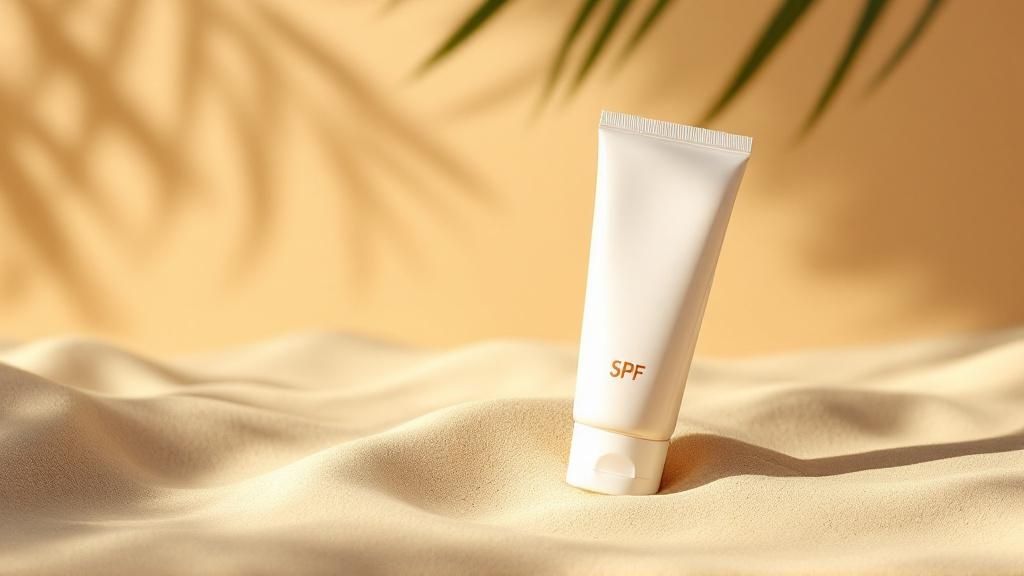 So, you’ve nailed your core routine of cleansing, moisturising, and applying sunscreen every day. What’s next? If you're feeling comfortable and your skin is happy, this is the perfect time to think about adding more targeted treatments. The secret here is to be patient and strategic. This isn't about a total overhaul; it's about making smart, thoughtful additions to your beginner skincare routine.
So, you’ve nailed your core routine of cleansing, moisturising, and applying sunscreen every day. What’s next? If you're feeling comfortable and your skin is happy, this is the perfect time to think about adding more targeted treatments. The secret here is to be patient and strategic. This isn't about a total overhaul; it's about making smart, thoughtful additions to your beginner skincare routine.
The most important rule I can share from experience is this: introduce only one new product at a time. Seriously. Give your skin a good two to three weeks to get used to it before you even think about adding something else. This way, if your skin has a reaction—good or bad—you know exactly which product is the culprit. A slow and steady approach is the best way to avoid irritation and learn what your skin truly needs.
Making Smart Additions to Your Routine
Think of these extra products as specialists you bring in to solve a specific problem. Is your skin looking a bit lacklustre? Still feeling a little dry even with a good moisturiser? Asking these questions is what will point you toward the right products.
A targeted serum is often the best first step. Serums are fantastic because they're lightweight but packed with high concentrations of active ingredients that sink deep into the skin.
- For Brightness: A Vitamin C serum in the morning is a game-changer for many. It helps brighten your complexion over time and adds an extra layer of antioxidant protection that actually helps your sunscreen work better.
- For Hydration: If your skin still feels thirsty, a hyaluronic acid serum is a must-try. It’s like a huge drink of water for your skin, drawing in moisture and plumping it up. You can read all about the benefits of hyaluronic acid serum in our guide.
Exfoliants are another powerful tool in your arsenal. They work by sloughing off dead skin cells, leaving you with a smoother, more radiant look. My advice? Skip the harsh, gritty scrubs and opt for a gentle chemical exfoliant with AHAs (like glycolic or lactic acid). Using it just one to two times per week in the evening is more than enough to see a difference.
The goal isn't to create a complex 10-step routine. It's about making intelligent, gradual upgrades that address your specific skin concerns, whether that's dullness, fine lines, or the odd breakout.
This kind of gradual, educated approach to skincare is becoming more and more popular. In fact, the beauty and personal care market in Egypt was valued at around USD 1,327.86 million and is expected to more than double by 2030. This growth is largely thanks to younger consumers who prefer to start simple and carefully expand their routines as their knowledge grows.
Common Beginner Skincare Questions
Taking your first steps into skincare can feel like learning a new language. You're bound to have questions, and that's perfectly okay. Wondering if you're "doing it right" is a common feeling, but getting solid answers builds the confidence you need to stick with it. That’s how you get real results from a beginner skincare routine.
One of the biggest questions I get asked is about timing. How long should you actually wait between applying different products? Don't worry, you don't need to pull out a stopwatch.
A good rule of thumb is to give each layer about 30 to 60 seconds to sink in. Just wait until your skin no longer feels wet to the touch. This simple pause is a game-changer; it stops products from pilling up and ensures each one can do its job properly without getting watered down by the next.
Another sticking point is the order of application. The easiest way I've found to remember this is to go from the thinnest texture to the thickest. It’s a lot like getting dressed on a cold day—you start with the lightest layers and build from there.
Key Skincare Questions Answered
So, a solid routine usually flows like this: cleanser, toner (if it's part of your routine), a lightweight serum, and then your heavier moisturiser. In the morning, the final, non-negotiable step is always sunscreen.
Consistency is truly the secret ingredient. While a good moisturiser might give you an instant feeling of hydration, real changes take time. You'll likely need at least 28-40 days—a full skin cell turnover cycle—to notice a real difference in your skin's clarity and texture.
It's just as important to recognise when a product isn't the right fit. Your skin will give you some pretty clear signals. Keep an eye out for any unusual redness, stinging, itchiness that won’t go away, or new breakouts where you don't normally get them.
If your face feels tight and stripped right after cleansing, that’s another tell-tale sign your cleanser might be too harsh. Learning to listen to what your skin is telling you is the absolute best way to fine-tune your routine over time.
I've put together a few more quick answers to some of the most common questions people have when they're just starting out.
Frequently Asked Questions
| Question | Answer |
|---|---|
| How much product should I use? | For most products like serums and moisturisers, a pea-sized amount is plenty. For sunscreen, you'll want a more generous amount—about two-finger lengths for your face and neck. |
| Do I need a different routine for morning and night? | Yes. Your morning routine should focus on protection (think antioxidants and sunscreen). Your night routine is for repair and treatment, using products with active ingredients like retinoids or acids. |
| Can I skip moisturiser if I have oily skin? | Definitely not! Oily skin still needs hydration. Skipping moisturiser can actually cause your skin to produce even more oil to compensate. Look for a lightweight, oil-free formula. |
| When should I introduce active ingredients? | Start slow. Introduce one new active ingredient at a time, using it only 2-3 times a week to see how your skin reacts before increasing the frequency. |
Hopefully, these pointers help clear things up and make building your routine feel much more manageable.
Ready to find products you can trust for your new routine? You can explore a hand-picked selection of authentic skincare at lo.la. Find exactly what your skin needs to glow by starting your journey today.










